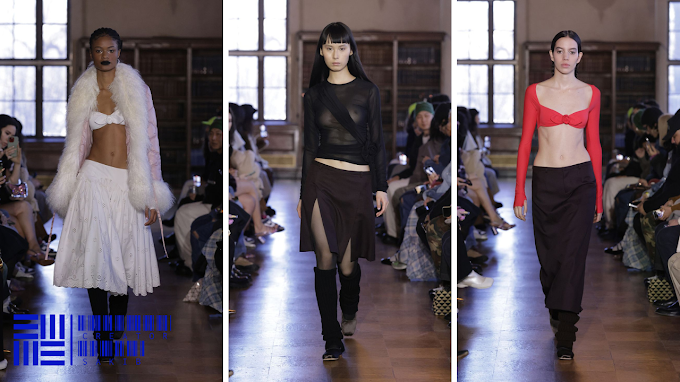Before the Metropolitan Museum of Art opened for the day one early morning in 2008, artist Yuki Kihara knelt down in front of two works by French painter Paul Gauguin and examined them in the quiet, empty gallery.
The Japanese and Samoan artist was particularly drawn to "Two Tahitian Women," from 1899, which depicts two female figures in an Eden-like scene. The work was on display in the New York museum at the time. One is leaning into her friend while holding a flower, and the other is presenting the audience with a platter of fruit but isn't quite looking them in the eye. Kihara has "upcycled" (or reimagined) the painting, along with many of Gauguin's other works of art, in a photography series titled "Paradise Camp" at the Venice Biennale, fourteen years after she first saw it.
When I say "upcycling," it means that I'm genuinely upgrading it from the original, Kihara explained in a video call. "It's not like reenactment or restaging," she added.
Kihara is the first Pacific Indigenous artist to represent New Zealand at the prestigious international art exhibition. She is a member of the Fa'afafine group in Samoa, who are born males but express a female identity. Natalie King's exhibition "Paradise Camp," which features Kihara, weaves together themes of LGBTQ+ rights, environmentalism, and decolonization. She portrays Fa'afafine in the leading parts in her rich photographs, which were captured on Upolu Island in Samoa with the help of a nearly 100-person cast and crew, maintaining the familiarity of Gauguin's setups but eschewing his exploitative viewpoint.
Gauguin's colonial view of paradise had a significant influence on modern painting. The 1903-born painter had predatory relationships with the young Indigenous women he encountered while spending a decade of his latter life in French Polynesia, leaving behind a difficult legacy that was explored in the 2019 exhibition "Gauguin Portraits" at the National Gallery in London. One of the teenage girls he painted was Teha'amana a Tahura, age 13, whose identification has been disputed but whom experts believe to be his second wife.
 |
| "Two Tahitian Women," from 1899, by Paul Gauguin. Credit: Paul Gauguin, Courtesy Metropolitan Museum of Art |
Upcycling and uncovering
How accurate and how fabricated are Gauguin's works? Kihara found the scenes, purportedly taking place in Tahiti, to be all too familiar.
She remarked, "It reminded me of people and places in Samoa the closer I looked at the background, and then the closer I looked at the models."
Kihara has discovered a strong connection to the archipelago through her thorough study of colonial photography, particularly through the works of Thomas Andrew, a New Zealand photographer who spent the last half of his life in Samoa from 1891 to 1939. Kihara found compositions that were exactly like Gauguin's art as well as proof that the artist visited the Auckland Art Gallery, where several of Andrew's pictures were kept, in 1895.
Even though Gauguin has never visited Samoa, several of his most famous works were actually directly influenced by images of its people and landscape, according to the expert.
The Mori scholar Dr. Ngahuia Te Awekotuku has written that the "androgynous" models he painted were probably Mh, the Indigenous Polynesian community who, like Samoa's Faafafine, are thought to be a third gender and express a female identity. Kihara also thinks that Gauguin's models might not be cisgender women.
Kihara set out to build on Gauguin's well-known works from a Pacific viewpoint keeping these linkages in mind. The two Fa'afafine models in her interpretation of the painting "Two Tahitian Women," titled "Two Fa'afafine (After Gauguin)," pose in front of the meticulous gardens of a nearby resort donning traditional clothing. As their props, Kihara decided to use regional wildflowers and a plate of rambutan, developing a completely new iconography.
Kihara claims that her portrayal questions the whole idea of paradise. She referred to the Garden of Eden in the Bible, where Adam and Eve lived, and remarked, "The idea of paradise is essentially heteronormative. "Paradise has been perpetuated by many people, including Paul Gauguin," she said, citing examples from well-known literature and art as well as advertising images of newlyweds on their honeymoon. He is a product of the Western gazing canon, which imposes this notion.
She continued, "Calling a place paradise also glosses over the realities of the ostensibly lovely areas where travelers flock to escape, including the region's history of colonial violence and the oncoming threat of climatic calamity, a conflict in which Samoa is on the front lines.
Kihara intends to display the pieces for her own community in Samoa, New Zealand, and Australia after the Biennale is over.
She declared, "I'm returning the integrity and the dignity to the Pacific, where it belongs to us.



.png)












